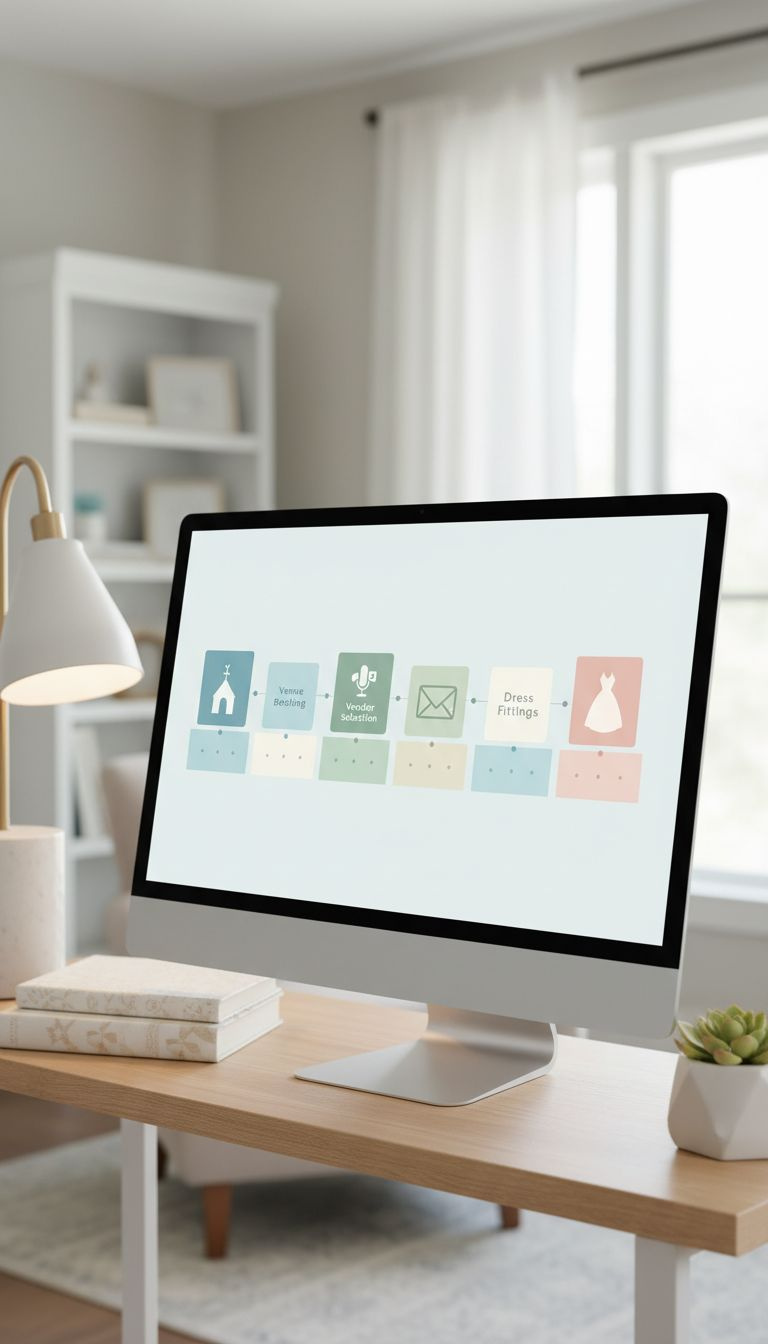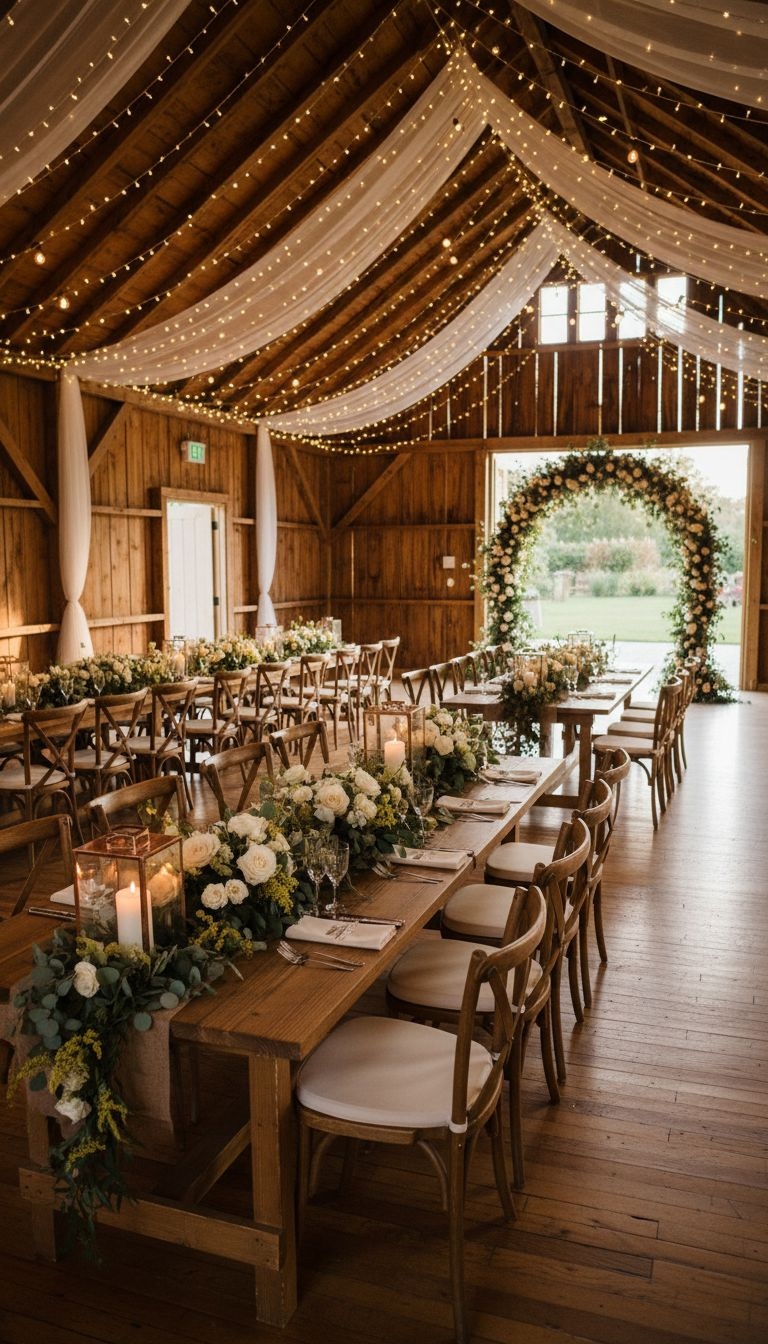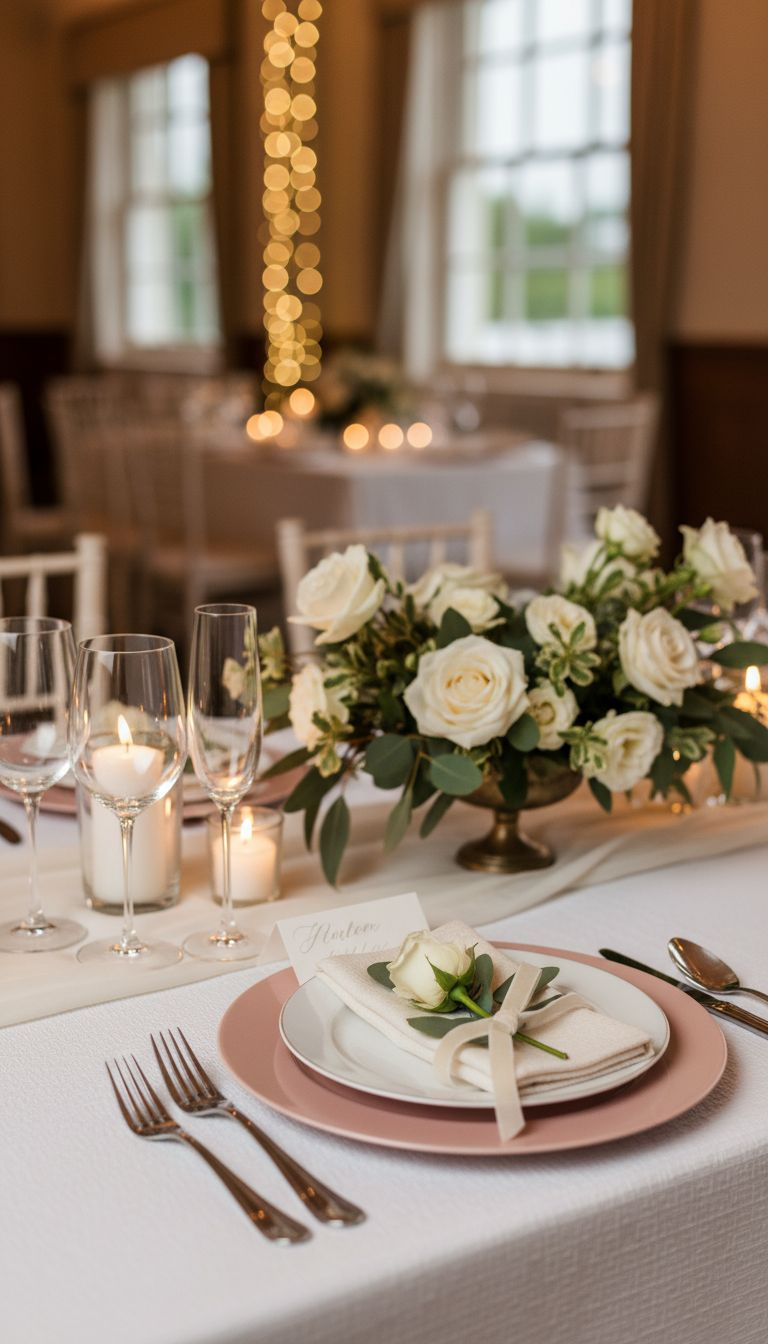Are you newly engaged, heart fluttering with excitement, yet a tiny flicker of overwhelm has already begun to set in? The journey of future wedding plans can feel like stepping into a beautiful, yet complex, labyrinth. You’re dreaming of a day that perfectly reflects your love story, but where do you even begin to map out such an important, personalized event?
Many couples share this feeling, grappling with the immense pressure of creating a dream wedding while simultaneously navigating daunting tasks like establishing a realistic budget, drafting an extensive guest list, and understanding the intricacies of a wedding timeline. The fear of missing crucial steps, unexpected costs, or allowing the planning process to strain your relationship are very real concerns that can dim the joy of this special time.
Proactive and strategic early wedding planning is your secret weapon because it allows ample time for securing preferred vendors, optimizing your budget, making thoughtful decisions, and significantly reducing overall stress, ensuring your unique vision for a personalized dream wedding can truly come to life. This ultimate guide will walk you through seven genius steps to transform your future wedding plans into an organized, joyful, and stress-free journey in 2025, covering everything from defining your vision and managing your finances to selecting your dream team and prioritizing your well-being.
Dreaming Big? Why Early Wedding Planning is Your Secret Weapon
Early wedding planning is your secret weapon because it allows ample time for securing preferred vendors, optimizing your budget, making thoughtful decisions, and reducing overall stress, ensuring your vision for a personalized dream wedding can truly come to life. Engaging in wedding prep early isn’t just about ticking boxes; it’s a strategic approach to planning a wedding that allows you to sculpt your ideal celebration without the panic. By starting your future wedding plans well in advance, you leverage foresight and proactive planning, a seasoned perspective that helps couples avoid common pitfalls and enjoy a more relaxed journey to their big day. This foundation of early organization sets the stage for a truly unique and memorable event, distinguishing your dream wedding from one marred by last-minute chaos.
The Psychology of “Future” Wedding Plans: Embrace the Excitement, Banish the Overwhelm
The journey from engagement to marriage is filled with emotional highs, but the complexity of wedding planning can sometimes introduce wedding planning stress and anxiety. It’s a deeply emotional process, involving hundreds of decisions that can feel overwhelming. To manage wedding expectations and prevent wedding anxiety, it’s crucial to acknowledge these feelings early. By embracing the initial excitement while developing strategies to avoid wedding chaos, you can maintain joy throughout the process. This involves fostering open communication with your partner, ensuring both your mental loads are managed, and focusing on the relationship that the wedding is meant to celebrate.
Pro-Tip: Schedule “wedding-free” dates regularly. These dedicated times to reconnect with your partner, free from any wedding talk, are essential for relationship preservation during intense planning and reflect expert advice on maintaining emotional well-being.
7 Genius Steps for Your Future Wedding Plans in 2025: Building Your Dream Day, Stress-Free
The 7 genius steps for future wedding plans include: 1. Defining Your Vision, 2. Setting a Realistic Budget, 3. Drafting Your Guest List, 4. Building Your Timeline, 5. Selecting Venue & Vendors, 6. Designing Details, and 7. Prioritizing Well-being. These steps are curated from industry best practices and lessons learned from countless successful wedding plans, leveraging collective experience to guide you efficiently. They form an ultimate wedding guide designed to make your modern wedding planning tips actionable and ensure a stress-free wedding planning journey to your personalized dream day in 2025.
1. Define Your Vision & Non-Negotiables: The “Why” Behind Your “I Do”

Pin your dream wedding vision to your board!
Defining your wedding vision board and non-negotiables is the cornerstone of personalized wedding planning. It’s about uncovering the “why” behind your “I Do” and establishing shared priorities with your partner. This crucial first step helps clarify your unique style and desires, ensuring your dream wedding ideas form a cohesive aesthetic that guides all subsequent decisions, from the overall theme to defining your wedding priorities.
What You’ll Need:
* Dedicated notebook or digital document for ideas
* Access to online platforms like Pinterest or physical magazines for inspiration
* Open communication with your partner for honest discussion
* List of 3-5 “non-negotiable” elements for both partners (e.g., specific music, cultural tradition, food preference)
What To Do:
1. Dream Together: Dedicate a specific time with your partner to freely brainstorm what your wedding feels like. Discuss keywords (e.g., intimate, grand, rustic, modern), desired emotions (joyful, elegant, relaxed), and initial thoughts on guest count and location style.
2. Gather Inspiration: Create a shared Pinterest board or physical mood board. Collect images, color palettes, decor ideas, attire styles, and anything that resonates with your shared vision. Don’t self-censor at this stage!
3. Define Your “Why”: Beyond the aesthetics, discuss the core purpose of your wedding. Is it a grand celebration of two families, an intimate declaration of love, or an epic party? This “why” will guide tough decisions.
4. Identify Non-Negotiables: Each partner should list their top 3-5 absolute must-haves for the day. These are elements you are unwilling to compromise on. Discuss and align on a joint list.
5. Summarize Your Vision: Write a concise paragraph or bulleted list describing your wedding vision. This will be invaluable for communicating with vendors later.
Pro-Tip: Don’t just gather images, analyze why you’re drawn to them. Is it the color, the mood, the specific detail? This deeper understanding helps articulate your vision more clearly to vendors, saving time and ensuring alignment.
2. Master Your Wedding Budget: The Financial Blueprint for Your Big Day

Save this budget hack for a stress-free wedding!
Mastering your wedding budget is crucial for preventing overspending and ensuring your future wedding plans remain on track. This financial blueprint helps you allocate funds effectively, avoid wedding budget mistakes, and find ways to save money for your wedding, even allowing for an affordable wedding if that’s your goal. A realistic and flexible budget, including a crucial contingency fund, is essential for a stress-free planning experience.
What You’ll Need:
* Collaborative Budget Template: A digital spreadsheet (Google Sheets, Excel) or a dedicated wedding planning app with budget features.
* Financial Records: Income statements, savings accounts access, and discussions with any family members contributing funds.
* Research Tools: Access to online wedding cost calculators and average spending reports for your region.
* Dedicated time with your partner for honest financial discussions.
What To Do:
1. Determine Your Total Spending Limit: Have a frank discussion with your partner (and any contributors) about the absolute maximum you are willing and able to spend. Be realistic.
2. Allocate Funds Broadly: Research average wedding cost breakdowns (e.g., 40-50% venue/catering, 10-15% photography). Use these as a starting point to allocate percentages to major categories based on your vision (Step 1).
3. Build a Detailed Spreadsheet: Create a master budget spreadsheet with columns for estimated cost, actual cost, deposit paid, and balance due for every category (venue, catering, attire, decor, photography, music, rings, invitations, etc.).
4. Include a Contingency Fund: Crucially, allocate 10-15% of your total budget to a “contingency fund” for unexpected expenses or last-minute changes. This is non-negotiable for stress reduction, protecting your future wedding plans.
5. Track Every Penny: As you make deposits and payments, immediately update your budget spreadsheet. This is the only way to stay on track and avoid surprises.
6. Review Regularly: Schedule monthly “budget check-in” meetings with your partner to review spending, adjust allocations if needed, and ensure you’re both comfortable with the financial progress.
Lesson Learned: Many couples regret not building in a contingency fund. Unexpected costs will arise, whether it’s gratuities, an extra hour of photography, or last-minute alterations. That 10-15% buffer is your peace of mind.
3. Draft Your Guest List Strategically: Numbers That Shape Your Celebration

Share this essential guest list tip!
Strategically drafting your wedding guest list is one of the most impactful early steps in managing wedding guests and shaping your celebration. The guest count directly influences your budget (from Step 2) and your potential venue capacity. Learning how to create a guest list effectively, while balancing expectations and financial realities, is key to successful future wedding plans. This step will also inform your wedding invitation strategy.
What You’ll Need:
* Guest List Manager: A spreadsheet, online tool (The Knot, WeddingWire), or a specialized guest list app.
* Family input (from both sides)
* Your preliminary budget (from Step 2)
* A clear understanding of your vision (from Step 1) regarding intimacy or scale.
What To Do:
1. Brainstorm Everyone: Start by listing everyone you and your partner would potentially invite, including family, friends, and colleagues. Have both sets of parents contribute their desired guests.
2. Categorize & Prioritize: Divide your list into categories: A-list (absolute must-haves), B-list (would love to invite if space/budget allows), and perhaps C-list. This helps with strategic cuts later.
3. Gather Contact Information: For all A-list guests, begin gathering current addresses, phone numbers, and email addresses. This saves time when sending save-the-dates and invitations.
4. Consult Your Budget: Remember that guest count is one of the biggest drivers of cost (catering, drinks, favors, invitations). Refer back to your per-person budget estimates.
5. Anticipate Venue Capacity: Keep your ideal or potential venue capacity in mind. It’s much easier to adjust your guest list now than to find a new venue because your list is too large.
6. Discuss Family Expectations: Have open, proactive conversations with family members who may have expectations about inviting certain individuals. Set clear boundaries based on your budget and vision.
Pro-Tip: When dealing with family input, frame discussions around your ‘per-person’ budget. For example, ‘Every additional guest is X dollars for catering alone, how does this fit our overall vision?’ This helps depersonalize cuts.
4. Build Your Comprehensive Planning Timeline: Your Roadmap to “I Do”

Download this essential timeline for smooth planning!
A comprehensive wedding planning timeline is your ultimate roadmap to “I Do,” clarifying how long to plan a wedding and ensuring all critical tasks are managed. Whether you opt for a 12 month wedding timeline or a shorter engagement to wedding timeline, structuring your tasks by deadlines will significantly reduce stress. This wedding checklist transforms daunting tasks into manageable steps, keeping your future wedding plans organized.
What You’ll Need:
* Master Wedding Checklist Template: A comprehensive digital or printable checklist (available from online planning platforms or a dedicated planner).
* Shared digital calendar (Google Calendar, Outlook)
* Your chosen wedding date (or a flexible range)
* Patience and flexibility for inevitable adjustments.
What To Do:
1. Choose Your Ideal Timeline Length: Most couples plan for 12-18 months. If you have a shorter engagement (6-9 months), be prepared for quicker decisions and less vendor availability. Align this with your chosen wedding date.
2. Select a Master Checklist: Find a comprehensive wedding planning checklist that breaks down tasks by month (e.g., 18 months out, 12 months out, 9 months out, etc.). This is your foundational guide.
3. Personalize Your Checklist: Adapt the generic checklist to your specific vision (Step 1) and budget (Step 2). Remove irrelevant tasks and add unique elements important to you.
4. Input Key Milestones into a Shared Calendar: Transfer critical deadlines (e.g., send save-the-dates, venue deposit due, final RSVP date) to a shared digital calendar visible to both partners.
5. Assign Tasks & Delegate: Review the checklist together and assign tasks to each partner based on strengths and preferences. Identify tasks suitable for delegation to bridal party members or a professional planner.
6. Regularly Review & Adjust: Planning is dynamic. Schedule monthly check-ins to review your timeline, assess progress, and adjust deadlines as needed. Don’t be afraid to be flexible!
Expert Insight: “A common mistake is trying to cram too much into a short timeline. Be realistic about what can be achieved, and prioritize your non-negotiables. It’s better to have a slightly longer, less stressful engagement than a rushed, frantic one.”
5. Smart Venue & Key Vendor Selection: Assembling Your Dream Team

Find your perfect venue with these tips!
Smart venue and key vendor selection is paramount to assembling your dream team for future wedding plans. This stage focuses on understanding how to choose wedding venues, hire wedding vendors like a wedding photographer, and navigate important documents such as wedding vendor contracts. Given that popular venues and vendors are often booked 9-12 months in advance, early action is critical.
What You’ll Need:
* Vendor Directories: Online platforms (The Knot, WeddingWire) or local wedding show lists.
* Interview Questions: Pre-written lists of questions for each vendor type.
* Contract Checklist: A guide for reviewing legal documents (or access to a legal professional).
* Your vision (Step 1), budget (Step 2), guest list (Step 3), and timeline (Step 4).
What To Do:
1. Prioritize Venue Search: Start researching venues as soon as your vision, budget, and guest count are solidified. Venue availability dictates your date, especially for popular spots.
2. Define Venue Criteria: Based on your vision and guest list, list your non-negotiables for a venue (e.g., outdoor ceremony, rustic barn, ballroom capacity for 150).
3. Research & Tour: Shortlist 3-5 venues. Schedule site visits, ask detailed questions about inclusions, restrictions, and availability for your timeframe. These questions to ask wedding venues are critical.
4. Book Your Big 3 (Venue, Caterer, Photographer): These typically get booked 9-12 months out. Once your venue is secured, prioritize finding your caterer (if not in-house) and photographer/videographer.
5. Interview Vendors Thoroughly: Don’t just look at portfolios. Schedule calls or meetings. Ask about their experience, style, contingency plans, and personality fit. Get at least 3 quotes for each category.
6. Read Contracts Carefully (Every Single Line!): Before signing, understand payment schedules, cancellation policies, what’s included/excluded, and overtime fees. Consider having a legal professional review major contracts.
7. Build a Vendor Communication Plan: Establish preferred communication methods and response times with each vendor. Create a shared document for all vendor contact information and key details.
Critical Advice: Do not underestimate the importance of chemistry with your vendors, especially your photographer and planner. They’ll be intimately involved in your day, and a good rapport ensures a smoother, more enjoyable experience.
6. Navigate Details & Design with Ease: Crafting a Cohesive Aesthetic

Get inspired by this stunning decor idea!
Navigating the myriad of details and design elements is where your vision truly comes to life, ensuring a cohesive aesthetic and a memorable guest experience. From wedding decor trends to choosing the perfect wedding color palettes, this step focuses on crafting the unique atmosphere of your celebration while staying true to your original vision. This includes understanding wedding invitation etiquette, when to send invitations, and exploring unique wedding ideas that make your experiential reception truly stand out.
What You’ll Need:
* Your wedding vision board (Step 1)
* Budget allocated for decor, attire, and stationery
* Vendors for florals, stationery, entertainment (from Step 5)
* Sample invitations, fabric swatches, and color chips.
What To Do:
1. Solidify Your Aesthetic: Use your vision board to guide decisions on color palette, floral styles, lighting, and overall ambiance. Aim for a cohesive look across all elements.
2. Design & Order Invitations: Work with your stationery vendor to create invitations that reflect your wedding’s style. Send save-the-dates 6-12 months out, and formal invitations 6-8 weeks before the wedding.
3. Choose Attire & Schedule Fittings: Select wedding attire for yourselves and potentially your bridal party. Schedule fittings well in advance to allow for alterations.
4. Plan Decor & Florals: Collaborate with your florist and decor rental company. Provide them with your vision board and budget, allowing them creative freedom within those parameters.
5. Curate Entertainment: Decide on music (DJ, band, live musician), and any other entertainment elements (photo booth, games, unique performances) to enhance the guest experience.
6. Consider Guest Comfort & Logistics: Think about transportation, accommodation blocks for out-of-town guests, and welcome bag essentials. Small thoughtful touches make a big difference.
7. Explore Modern & Sustainable Trends: Integrate elements like digital RSVPs, eco-friendly favors, or AI-assisted design concepts if they align with your values and budget, reflecting current developments in 2025.
Pro-Tip: When it comes to decor and florals, trust your professionals. Give them your vision and budget, and then let their expertise shine. Over-micromanaging can stifle creativity and add unnecessary stress.
7. Prioritize Well-being & Enjoy the Journey: Beyond the Checklist

Cherish your connection – pin this reminder!
Beyond the checklists and contracts, prioritizing your well-being and enjoying the journey is arguably the most crucial step for your future wedding plans. Learning to reduce wedding stress, manage wedding expectations, and maintain a relationship-first wedding planning approach ensures your emotional well-being is safeguarded. This focus on self-care and open communication helps achieve a truly stress-free wedding, making the entire engagement period a joy.
What You’ll Need:
* A commitment to open communication with your partner
* Designated “wedding-free” zones or dates
* Self-care routines (exercise, hobbies, meditation)
* A trusted support system (friends, family, or professional counselor if needed).
What To Do:
1. Schedule “Wedding-Free” Dates: Make it a non-negotiable to have regular date nights or weekends where wedding talk is strictly off-limits. Reconnect as a couple without the pressure of planning.
2. Divide and Conquer (Fairly): Ensure tasks are divided equitably between you and your partner. Check in regularly to ensure neither person is feeling overwhelmed or carrying a disproportionate load.
3. Practice Self-Care: Engage in activities that help you de-stress – exercise, meditation, reading, spending time outdoors. A healthy mind makes for a more resilient planner.
4. Set Boundaries: Learn to politely say “no” to requests that don’t align with your vision, budget, or time. This applies to family, friends, and even vendor upsells.
5. Communicate, Communicate, Communicate: Talk openly about your feelings, fears, and frustrations. A strong partnership is your best asset against planning stress.
6. Focus on the “Why”: When things get tough, revisit your core “why” (from Step 1). Remember that the wedding is about celebrating your love and commitment, not about achieving perfection.
7. Delegate Smartly: If feasible, consider hiring a day-of coordinator, or delegate specific tasks to trusted bridal party members to offload pressure in the final weeks.
Financial Insight: While wedding insurance might seem like an added cost, it’s a small investment for significant peace of mind, protecting against unforeseen circumstances like vendor cancellation or venue damage.
Key Takeaways: Your Quick Guide to Future Wedding Plans
Starting your future wedding plans involves 7 key steps: defining your vision, setting a realistic budget, strategically drafting your guest list, building a comprehensive timeline, smartly selecting your venue and vendors, designing details cohesively, and prioritizing your emotional well-being throughout the journey. By following these genius steps, you empower yourselves to create a truly personalized and memorable celebration.
- Vision First: Always begin by defining your shared dream wedding vision and non-negotiables to guide all subsequent choices.
- Budget Smart: Establish a realistic budget from the outset, including a 10-15% contingency fund, and meticulously track all expenses.
- Guest List Impact: Understand that your guest count is a major budget driver; manage it strategically in conjunction with your venue capacity.
- Timeline is Key: Develop a comprehensive timeline (12-18 months is ideal) to break down tasks, set deadlines, and reduce stress.
- Vendor Dream Team: Research and book your core vendors (venue, caterer, photographer) early, prioritizing rapport and transparent contracts.
- Cohesive Details: Ensure all design and logistical details, from invitations to decor, align with your overall aesthetic for a memorable guest experience.
- Prioritize Well-being: Don’t let planning overshadow your relationship; schedule “wedding-free” dates, communicate openly, and practice self-care.
People Also Ask About Future Wedding Plans
Q: What should be the very first step in future wedding plans?
The very first step is to define your shared vision and budget with your partner. This foundational discussion helps align your dreams with your financial realities, providing a clear compass for all subsequent decisions, from guest count to venue style.
Q: How much time do I realistically need to plan a wedding in 2025?
Most couples plan for 12-18 months, which is ideal for securing preferred vendors and enjoying the process without excessive rush. Shorter engagements (6-9 months) are possible but require faster decision-making, increased flexibility, and potentially a higher budget for last-minute bookings.
Q: How do I create a wedding budget without getting overwhelmed?
Start by setting an overall spending limit, then allocate percentages to major categories like venue/catering (40-50%) and photography (10-15%). Crucially, include a 10-15% contingency fund for unexpected costs, and use a detailed spreadsheet to track every expense from the outset.
Q: Should I hire a wedding planner for future wedding plans?
Hiring a wedding planner is highly recommended for complex weddings, tight timelines, or busy couples, as they offer expertise, vendor connections, and significant stress reduction. For smaller, simpler events with ample time and budget constraints, a DIY approach with a day-of coordinator can also be effective.
Q: What are some current wedding trends for 2025 that I should consider?
For 2025, consider trends like the integration of AI tools for planning tasks, a focus on sustainable and eco-conscious practices, intimate micro-weddings, and highly experiential receptions. These trends reflect a desire for personalized, meaningful, and efficient celebrations.
Final Thoughts
Embarking on your future wedding plans is an exciting journey, and with these seven genius steps, you have a solid foundation to build your dream day. Remember that while the checklists and logistics are important, the heart of the celebration lies in your love story and the bond you share. By approaching the process with intention, open communication, and a commitment to well-being, you’ll not only plan a beautiful wedding but also strengthen your relationship along the way. Your wedding day in 2025 should be a joyous reflection of your journey together, allowing you to fully savor every moment. Which of these steps will you tackle first?
Last update on 2025-10-22 / Affiliate links / Images from Amazon Product Advertising API






